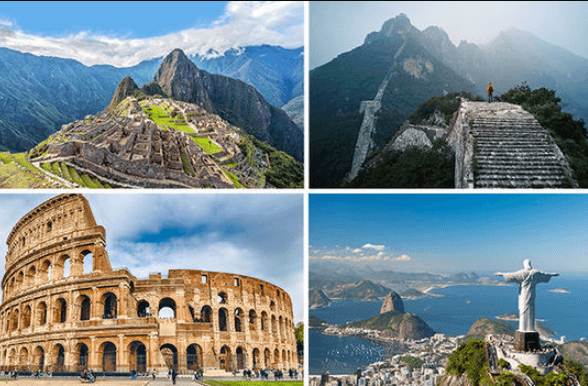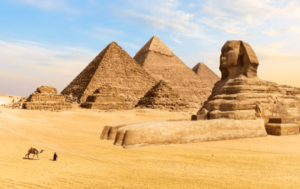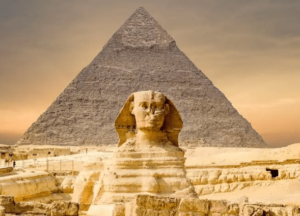The Seven Wonders of the World, ancient and modern, symbolize human ingenuity and architectural excellence. From classic wonders that embody perfection to recent additions like Angkor Wat, these wonders are captivating in their cultural and historical significance.
The Seven Wonders of the World ranked globally. Each wonder encapsulates cultural, historical and architectural significance and embodies human creativity throughout the ages. In this article, you will get the list of 7 Wonders of the Ancient and ModernWorld with complete information.
What is the difference between the old and new wonders of the world?
The key difference is that this time, it wasn’t just one person making the choice, but millions of people around the world choosing the wonder. The elected Seven Wonders of the World are the people’s choice and date back to 2000, from the earliest times humans have lived on Earth.
Why did the Seven Wonders of the World change?
The original list of the Seven Wonders of the World is very old, and the only one that survives today is the Great Pyramid of Giza in Egypt.
Therefore, a Swiss company took the initiative to compile a new list. The world agreed, with nearly 100 million people voting on a new list of the Seven Wonders of the World.
Original 7 Wonders of the World (Ancient World)
1. The Great Pyramid of Giza
The Great Pyramid of Giza was built in 2570 BC and still stands today. It is estimated that it took 20 years and as many as 100,000 workers to complete the Great Pyramid, which was built as the tomb of the 4th Dynasty Egyptian Pharaoh Khufu. It was built as part of a complex that included a temple and many other pyramids.
The pyramid’s outermost stone is a highly polished white limestone that was loosened by an earthquake more than 600 years ago and removed to build the city and mosque. When these casing stones were in place, some people believed the pyramids were so large and bright that they could have been seen from the moon.
There is much speculation about the methodology and intent of the pyramid’s construction, including references to the moon, the constellation of Orion, continental gravity, and more.
What is known, however, is that the four sides of the base are over 700 feet long, with a length difference of no more than 8 inches. Each face of the pyramid is almost perfectly aligned with the four cardinal points of the compass. The size of the pyramid is converted to the equivalent ratio of 2π with nearly perfect accuracy.
2. Temple of Artemis in Ephesus
The Temple of Artemis at Ephesus was built in 550 BC and destroyed by fire in 356 BC. The Temple of Artemis in Ephesus was built and rebuilt over many years. The most famous one was built around 550 BC and funded by King Croesus of Lydia.
Unlike many other temples of the time, this one was built of marble and sparkled with gold. The temple’s foundation was over 180 by 350 feet, and stairs led to an elevated platform on which stood more than 100 beautifully carved pillars supporting the roof. It was more than twice the size of the Parthenon and was so magnificent that it soared above the clouds.
The temple contained many amazing works of art, but the most famous was the statue of Artemis. The original no longer exists, but it is thought to have been made of gold and other beautiful materials. Her legs were covered with animals and bees, and the upper part of her body was covered with her breasts, symbolizing fertility.
Although it was destroyed and rebuilt several times and was eventually destroyed by man, nature, and neglect, the most famous form of the temple was destroyed by arson committed by a man named Herostratus on the night Alexander the Great was born.
3. The Hanging Gardens of Babylon
The Hanging Gardens of Babylon were built in 600 BC and destroyed by an earthquake in 226 BC. The first and most interesting fact about the garden is that there is considerable controversy as to whether or not the garden actually existed.
There are many elaborate descriptions and poetic descriptions of gardens, whether they existed or not. It is generally believed that King Nebuchadnezzar II built it for his wife, who missed the garden of their home. Some research suggests that it may have been a series of elaborate rooftop gardens. Another theory is that the garden was created within the walls of the royal palace.
But Babylon, in the middle of the desert, had no such natural greenery. I wonder how such a green forest could survive in a desert. Recent excavations have suggested the use of a remarkable irrigation system using cellar wells with chain pumps to water the gardens.
However, other theories suggest that the gardens were not in Babylon at all. Rather, it is said that Sennacherib built it on the eastern bank of the Tigris River. Regardless of the outcome, it is interesting to note that the imagination of poets and ancient historians created one of the wonders of the world.
4. The Lighthouse in Alexandria
The Lighthouse of Alexandria was built in 280 BC and destroyed by an earthquake in 1323 AD. Located on Paros Island in the Port of Alexandria, this lighthouse is perhaps the most famous in history. The lighthouse was very different from modern lighthouses in that it was built in three tiers, all leaning inward.
It is made of marble blocks using lead mortar. The lowest was square, the next was octagonal, and the top was cylindrical. Inside the lighthouse, there were ramps and “dumbwaiters” to transport wood to the fire that burned at night.
The open top of the lighthouse contained a large curved mirror inside that was used to reflect sunlight during the day and fire at night. Sailors were said to be able to see the light from up to 35 miles away.
According to legend, its light was so bright that it could burn enemy ships. There are many stories about its ultimate demise, but the most likely cause is believed to be the disintegration caused by 22 earthquakes between 320 AD and 1323 AD.
The Alexandrian Lighthouse was so famous in ancient times that the island on which it stood, Pharos, became the etymology of lighthouse in many languages.
5. Mausoleum of Halicarnassus
The Mausoleum at Halicarnassus was built in 352 BC and destroyed by an earthquake in 1404 AD. This monument was built as the tomb of Mausolus, governor of the Persian Empire.
His widowed wife Artemisia (who was also customarily his sister) spared no expense. She commissioned famous Greek architects and artists to design tombs and sculptural reliefs for each of the four sides of the building.
The monument was nearly square, nearly 14 stories tall, and had a base area of over 10,000 square feet. There were nine massive columns on each side of the tomb, and at the top was a stepped pyramid topped by four marble chariots bearing the figures of Mausolus and Artemisia.
The monument lasted for nearly 17 centuries and was eventually destroyed by a series of earthquakes. And like the lighthouse of Alexandria, the tomb was so famous that Mausolus’s name became the root word for the great tomb in many languages (e.g., “mausoleo” in Spanish).
6. Zeus statue in Olympia
The Olympian statue of Zeus was built in 430 BC and was destroyed by fire in 426 AD. This statue, carved from ivory on a cedar throne, was created by the Greek sculptor Phidias around 430 BC. In his right hand, he held a life-size statue of Nike, the goddess of victory, and in his left hand, he had a large sceptre with an eagle’s head.
Standing nearly 40 feet tall, the statue filled the entire width of one of the aisles of the Temple of Zeus, and its head is said to have almost scraped the temple ceiling. The temple was destroyed in 426 AD, and many historians believe the statue was damaged at that time.
However, others believe the statue was moved to Constantinople (now Istanbul) and killed about 50 years later. Although many copies of the statue were made over its lifespan of over 800 years, no statue is known to have survived.
7. Colossus of Rhodes
The Colossus of Rhodes was built in 282 BC and destroyed by an earthquake in 226 BC. In 294 BC, the people of Rhodes began building a giant statue of the sun god Helios. They believed that it was thanks to his blessings that they were able to endure the long siege on the island and emerge victorious.
The Colossus was built of bronze, reinforced with iron, and weighed down with stone. It is often depicted crossing Mandrakion Harbor, but this is currently considered technologically impossible. Therefore, it probably stood by the port.
The statue collapsed during an earthquake in 226 BC. The oracle at Delphi suggested that it failed because the Rhodesians attacked Helios, and they decided not to rebuild it.
The statue remained in the ground until 654 AD, and even when it was broken, it was so impressive that many people travelled to see it.
New 7 Wonders of the World Modern
The Seven Wonders of the Modern World is a list of landmarks selected through a global poll conducted by the New 7 Wonders Foundation. The list was published on July 7, 2007. These landmarks were chosen for their cultural and historical significance and architectural wonders.
The New 7 Wonders Foundation aims to create a list of new wonders that represent some of the modern world’s most impressive achievements. Below is the list of the new Seven Wonders of the World.
1. The Great Wall of China
The Great Wall of China is a work of engineering estimated to be approximately 8,850 kilometres long. However, the Chinese claim it is 13,170 km (21,200 km) long. The Great Wall of China was built over 2,000 years, starting in the 7th century BC.
The goals of this great organization at the time included managing trade and immigration, controlling borders, levying tariffs on Silk Road trade, and defending it.
2. Colosseum
The Flavian Amphitheater, commonly called the Colosseum or Colosseum, is a spectacular arena built in Rome and opened in 2 AD. 80 Vespasian’s son Titus staged a 100-day contest that included gladiator battles and animal contests.
It is one of the Seven Wonders of the World. Despite the fact that two-thirds of the original structure has been damaged over time, it remains one of the most popular tourist attractions.
3. Machu Picchu
The Inca ruins in Peru, called Machu Picchu, were “discovered” by Hiram Bingham in 1911. It is one of the Seven Wonders of the World. Close to downtown Cusco.
Vilcabamba, the secret Inca fortress used during the 16th-century revolt against Spanish rule, was exactly the building he had in mind. It is one of the few large pre-Columbian ruins found almost intact.
4. Chichen Itza
The Mayan metropolis in Mexico is called Chichen Itza. It is located on the Yucatan Peninsula, which enjoyed great prosperity in the 9th and 10th centuries AD. Chichen Itza is also thought to have been included in the mythical metropolis of Tolans mentioned in later Mesoamerican literature.
The city’s ruins include religious buildings from the Mayan civilization, such as the Temple of Kukulkan, which has 365 steps, one for each day according to the Hab solar calendar.
5. Petra Jordan
Petra is a remarkable historical and archaeological city in southern Jordan. It is also known as Raqmu or Rose City because of its colour. It is one of the Seven Wonders of the World. The Nabataeans, a Bedouin Arab tribe indigenous to what is now southwestern Jordan, are thought to have founded the city of Petra as a trading centre.
Petra is about 150 miles south of Jerusalem and Amman, the capital of Jordan, and is roughly halfway between Damascus, Syria, and the Red Sea, making it the commercial centre of the region at the time.
6. Cristo Redentor Statue
On Mount Corcovado in Rio de Janeiro, the Christ the Redeemer statue, also known as Cristo Redentor, is an Art Deco-style statue of Jesus. Heitor da Silva Costa designed the 130-foot statue made of reinforced concrete and soapstone.
Construction cost approximately $250,000, much of which was raised through donations. The statue, which weighs 635 tons, is located atop Mount Corcovado in the Tijuca Forest National Park, offering views of Rio de Janeiro. Christ the Redeemer Statue
Designed by sculptor Paul Landowski and built by engineer Heitor da Silva Costa in collaboration with Albert Caquot. Sculptor Gheorghe Leonida created the face.
7. Taj Mahal
The Taj Mahal is a marble mausoleum complex and one of the best examples of Mughal architecture. Shah Jahan (reigned 1628-58) built this building in memory of his wife Mumtaz (Arjumand Banu Begum), known as “the chosen one of the palace,” who died in 1631 while giving birth to their 14th child.
It is one of the New Seven Wonders of the World. It is estimated that the Taj Mahal project involved 20,000 artisans under the direction of a committee of knowledgeable architects of the time. Taj Mahal
How many wonders of the world can you still visit?
Today, the only remaining intact form of the original Seven Wonders is the Pyramids of Giza, Egypt.
However, some remains of the Temple of Artemis (Turkey) remain. The Mausoleum of Halicarnassus (Türkiye) and Paros of Alexandria (Egypt) are both worth a visit.
Despite only one of the original seven wonders remaining largely intact, seven “new” wonders still exist and can be explored on your own.
How were the Seven Wonders of the World selected?
The Seven Wonders of the World were first listed by the Greek historian Herodotus in the 5th century BC. He created this list based on the most impressive buildings he saw during his travels around the world. However, the new list of Seven Wonders of the World was compiled through a global vote in 2007.
Millions of people around the world voted for their favourite wonders, and the top seven vote-getters made a list. There are no special criteria for being selected as one of the Seven Wonders of the World.
However, wonders are typically chosen for their architectural and engineering significance, historical significance, beauty, and aesthetic appeal.



